Lahore is popular for its bustling bazaars, cultural festivals, and renowned education institutes. However, there’s another thing which the capital city of Punjab is quite famous for – its historical buildings. The Mughal era, in particular, witnessed the construction of several notable monuments and historical buildings in Lahore, some of which are still popular among both locals and tourists.
Popular Historical Buildings in Lahore
Here is a list of some of the most famous historical buildings in Lahore.
- Minar-e-Pakistan
- Lahore Fort
- Badshahi Mosque
- Lahore Museum
- Tomb of Jehangir
- Shalimar Garden
- Masjid Wazir Khan
Minar-e-Pakistan
On 23rd March, 1940, the All-India Muslim League passed the Lahore Resolution in which the concept of a united homeland for Muslims living under the British Raj was accepted. Minar-e-Pakistan was constructed in Iqbal Park to commemorate the event, in the form of a tall minaret. The people of Pakistan also celebrate 23rd March as Pakistan Day which is a national holiday, every year.
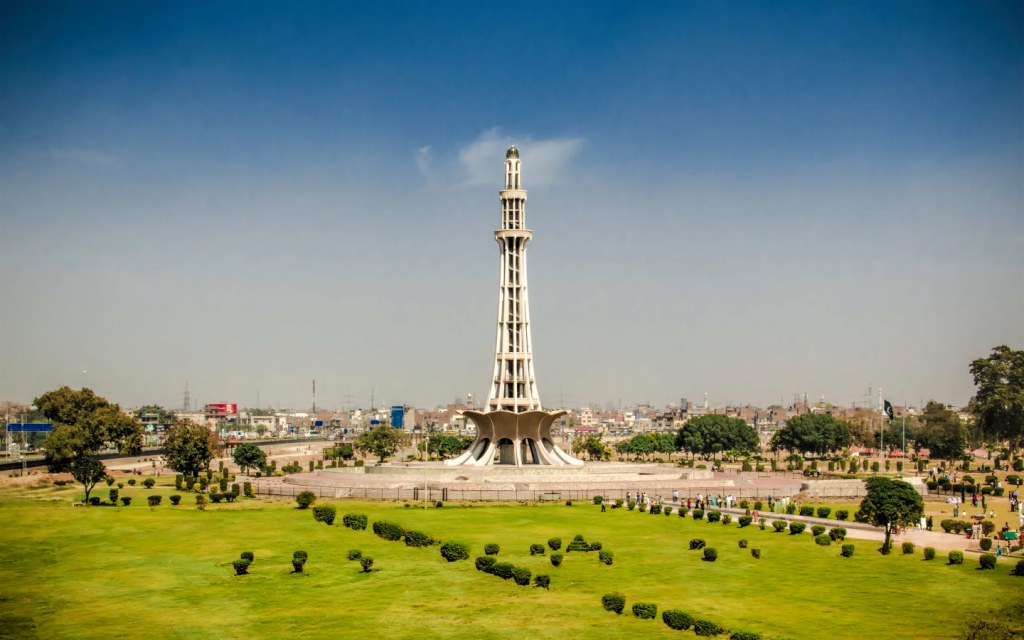
Being one of Pakistan’s biggest national monuments, the magnificent Minar-e-Pakistan is one of our country’s most famous buildings in Lahore. Open to the general public, the building was initially constructed as a tower in the 1960’s. It was designed by a Russian-born Pakistani civil engineer and architect, Nasreddin Murat-Khan.
Opened in 1968, the 70 m high tower boasts a fascinating design which is a mix of contemporary and Mughal architecture. Undoubtedly, the site is one of the most popular tourist attractions in Lahore. Constructed out of reinforced concrete, the tower’s walls and floors are rendered in stones and marble.
Location: Greater Iqbal Park
Lahore Fort
Also popularly known as the Shahi Qila, the famous Lahore fort was constructed during 1556-1605. The foundation of the fort was laid during the reign of Akbar. At that time, the fort’s design was a fusion of the Hindu and Islamic architecture motifs. However, more additions were made during the Shah Jahan period including luxurious marbles and Persian floral designs. Aurangzeb, the last of the great Mughal emperors, constructed the iconic Alamgiri Gate which faces the famous Badshahi Mosque.
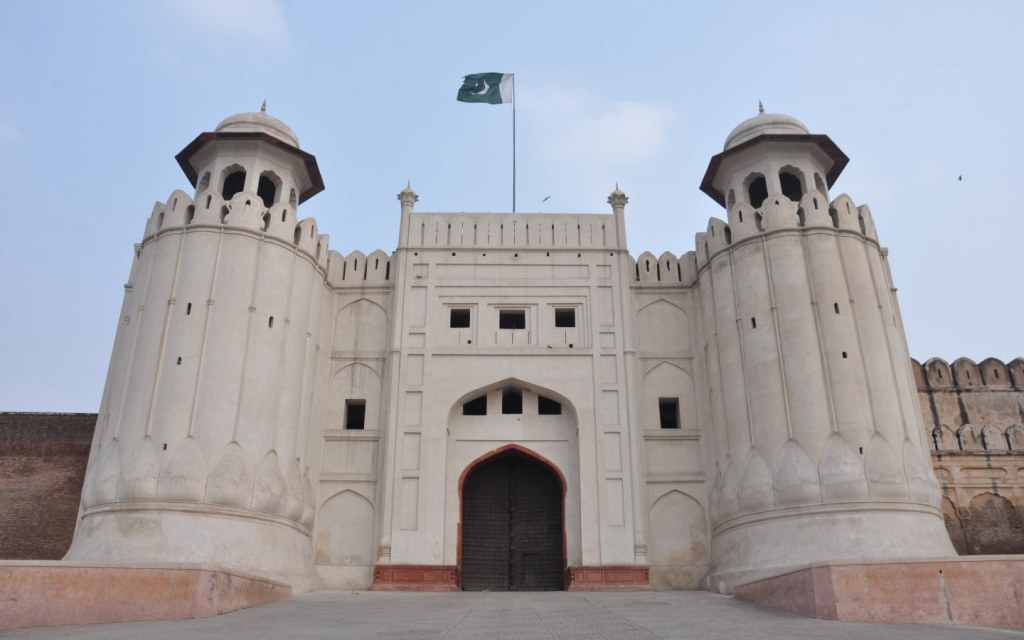
Situated in the Walled City, the majestic fort represents the architectural genius of the Mughal era. If you love the rich history of Lahore and have a keen interest in the Mughal architecture, the Lahore Fort is a must-visit historical spot for everyone. The entry ticket costs PKR 20 for the fort and PKR 100 for visiting Sheesh Mahal. You can also hire a tour guide for the fort an additional amount of PKR 150. You can pay a visit to the fort from 8:30 am to 5:00 pm, Monday to Friday.
Location: Fort Road, Walled City
Badshahi Mosque
Constructed in 1673, the Badshahi Mosque in Lahore, was built by the Mughal Emperor Aurangzeb. It ranks second on the list of the largest mosques in Pakistan. Not only does the building hold great significance, it is also one of the most popular historic buildings in Lahore which is designed to accommodate over 50,000 worshippers at a time. Visitors can also witness relics of the prophet Muhammad, his daughter and his son-in-law.
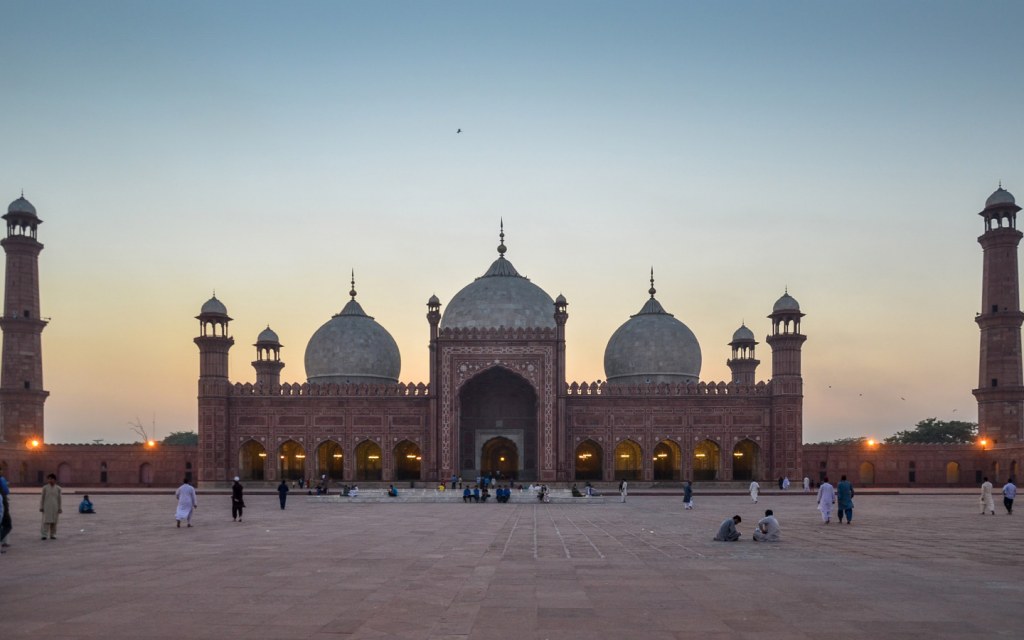
Unluckily, the Badshahi Mosque underwent damage during the Sikh regime. The Sikh rulers used the mosque as a shelter for keeping animals such as horses and camels. Historians also believe the Sikh emperors stole valuable jewels such as gold and rubies from the mosque. They also forbade Muslims from worshipping at the mosque and only granted a small area outside to offer prayers.
Things were pretty much the same when the British took control of India. The mosque was used as a military training space. However, the British government later returned the mosque as a good will gesture. But, the structure of the mosque had dilapidated from neglect and misuse. The British government set up The Badshahi Mosque Authority in 1852 to restore the original beauty of the historical monument. Massive repairs were also made under the management of architect Nawab Zen Yar Jang Bahadur. Restoration and renovations carried on until 1960 and the total costs accumulated to more than PKR 4.5 million.
Location: Walled City, Lahore
Lahore Museum
The list of historical buildings in Lahore is incomplete without the inclusion of The Lahore Museum. Originally established in 1865-66, the present building is situated in Mall Road. Being the biggest museum in the country, it offers many interesting things to see. These include a wide collection of textiles, ancient jewelry, armory, and pottery.
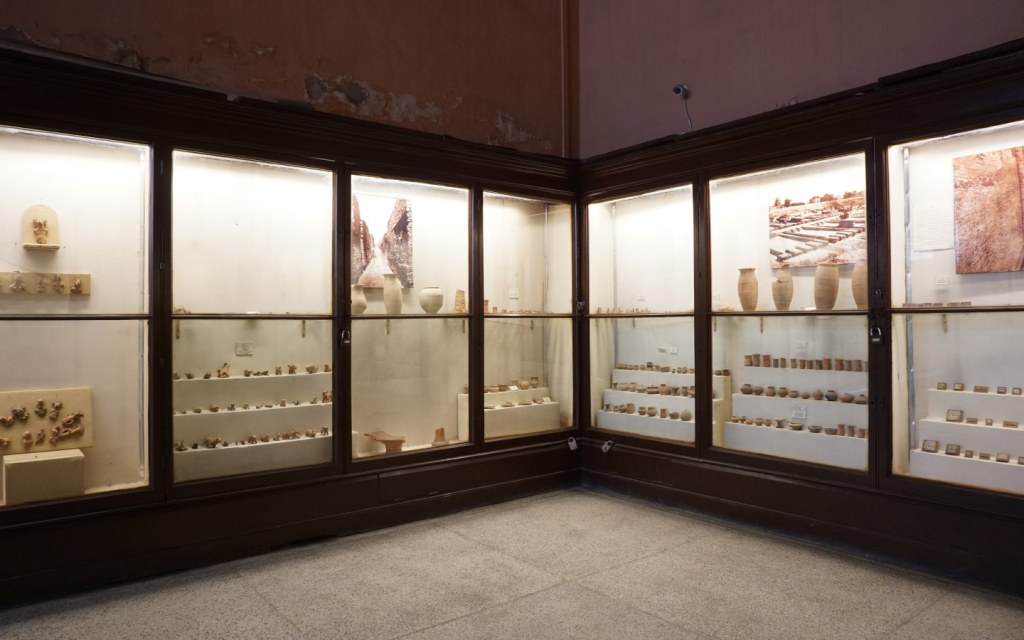
Most people don’t know that the father of Jungle Book author, Rudyard Kipling served as the head curator of the museum back in 1875. John Lockwood Kipling was also a teacher nearby Mayo School of Art and helped the museum collect many artifacts from all over Southern Asia. There are also relics from the Gandhara and Indus Valley civilization. You can also find Nepalese and Tibetan work on display. The beautiful entrance hall greets the visitors with a beautiful ceiling which features works by the legendary Sadequain.
The visiting hours are from 9 am to 5 pm. Tickets range from PKR 5 for children/students and PKR 20 for adults. However, foreigners are charged PKR 400. The museum is one of the most famous buildings in Lahore but is closed on Fridays and on Eid holidays.
Location: Mall Road, Anarkali Bazaar
Tomb of Jehangir
The list of old buildings in Lahore is incomplete without the mention of Jehangir’s tomb. As the name suggests, the mausoleum was built for the Mughal Emperor Jahangir by his son Shah Jahan, ten years after his death. The tomb has four minarets which are 30 meters high. Although, historical facts attribute the construction of the tomb to Shah Jahan, many historians believe the tomb was the result of Nur Jahan’s vision. Being the twentieth and the last wife of Jehangir, she envisioned the tomb after taking inspiration from her father’s burial place. It is believed that she designed and funded the mausoleum.
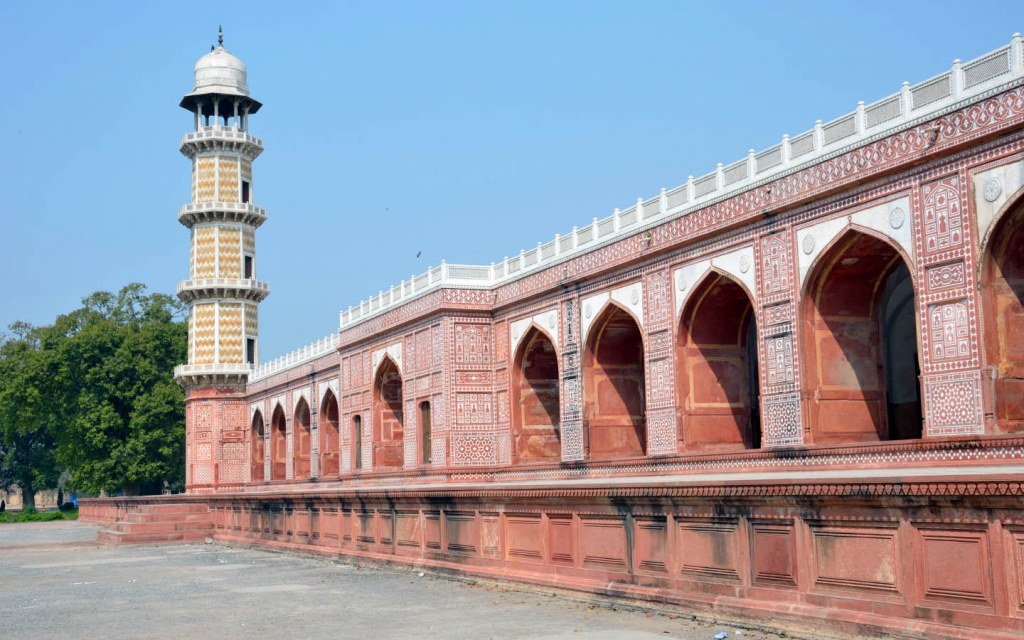
The construction of the tomb started in 1627 and took a decade to complete.
Covering an area of 55 acres, the tomb has been constructed based on the pattern of classical Charbagh that comprises of bisecting perpendicular paths. The tomb is a fine example of the architectural proficiency and geometrical precision of the Mughal architecture. Visiting hours are from 9 am to 7 pm.
Location: Circular Walk, Shahdara Town
Shalimar Garden
Another masterpiece of the Mughal era, Shalimar Garden was constructed by Shah Jahan in 1641 AD. Situated near Baghbanpura, this is among the finest architectural creations by the Mughal emperors. Historians report that the inspiration for the Shalimar garden was taken from the beautiful gardens of Kashmir.
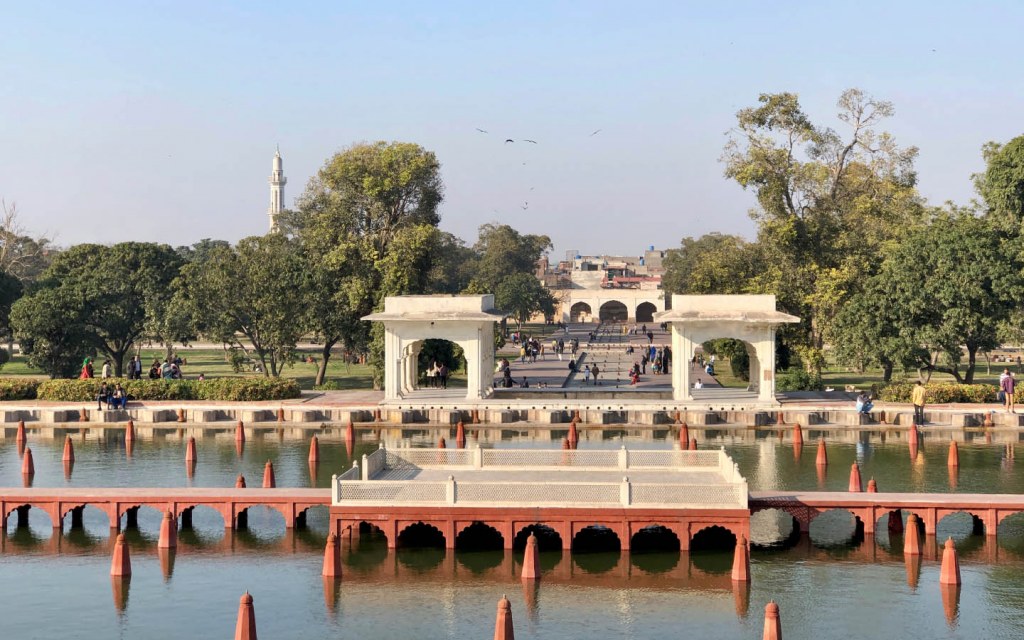
During the 16th and the 19th century, the Mughal emperors used the Shalimar Gardens as the Royal pleasure garden. Divided into three parts, the mesmerizing garden features impressively designed flower beds and fountains and covers an area of 80 acres. Along with Lahore Fort, Shalimar Garden was included by UNESCO as one of the World Heritage Sites in Pakistan, in 1981. Don’t forget to check out Shalimar Garden and other popular places to visit in Lahore, the next time you are traveling to the city of gardens.
Location: G. T. Road, Shalamar Town
Masjid Wazir Khan
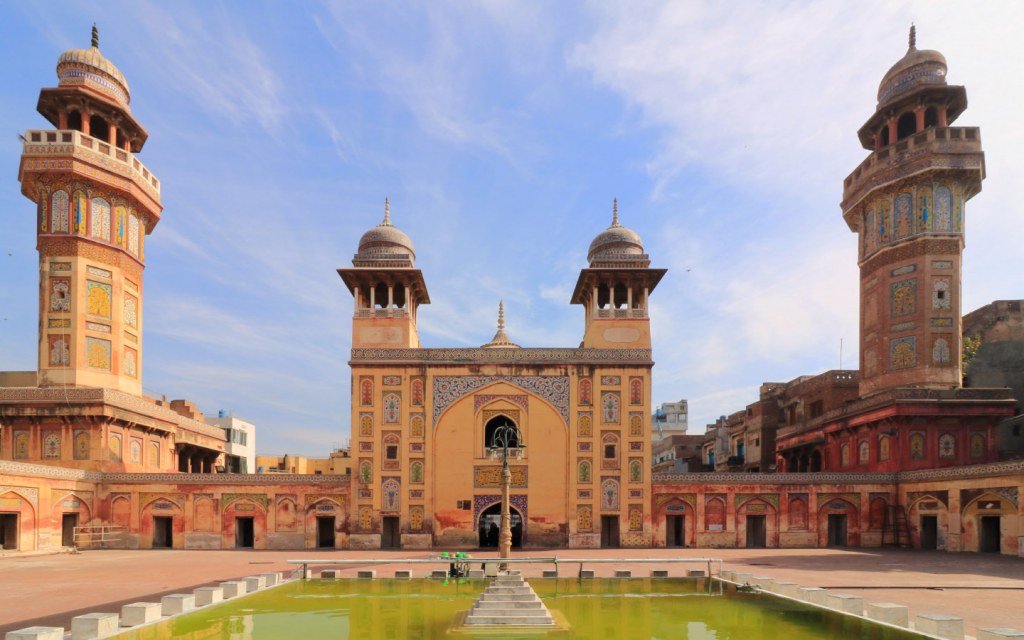
Popular for its intricate tile work, the Wazir Khan Mosque was built in seven years. Its construction began during the rule of Shah Jehan, around 1634–1641 AD. It was constructed by Hakim Sheikh Ilmuddin Ansari, a resident of Chiniot. He served Shah Jahan as the court physician and was popularly referred to as Wazir Khan, a title bestowed upon him by Shah Jahan. The mosque is located inside the inner city and can be easily accessed via the Delhi Gate. A testimony of the mughal affinity to finesse in architecture, the mosque continues to be one of the most influential old buildings in Lahore.
The mosque served as a place of learning under the Mughals. Scholars and intellectuals from all parts of the Muslim world gathered at the mosque to participate in scholarly discussions. Moreover, there were hujras or small rooms in the mosque where students learning calligraphy and the holy Quran resided. The building is famous for its Qashani tile work from the Mughal period. The Persian-influenced styles, colors, and motifs include grapes and star-shaped flowers.
Location: Shahi Guzargah, Dabbi Bazar, Chota Mufti Baqar, Walled City
Experience the Magic of Lahore!
There are many famous tourist spots and buildings which attract people of all ages to this city. Lahore is also home to many renowned education institutes, parks, and buffet restaurants which make living in Lahore a pleasurable experience. In case you are planning to move to the city of gardens, there are hundreds of properties for sale in Lahore so you can find the best option.
Whether you are traveling to the city for work or leisure, you must pay a visit to the famous buildings in Lahore to have a great time. If you are on a visit, make sure you explore these historical buildings in Lahore to experience the nostalgic beauty of this culturally rich city. You can also stay in some of the most popular hotels in Lahore to make your stay comfortable.
Stay tuned to Zameen Blog, the best lifestyle blog online.



